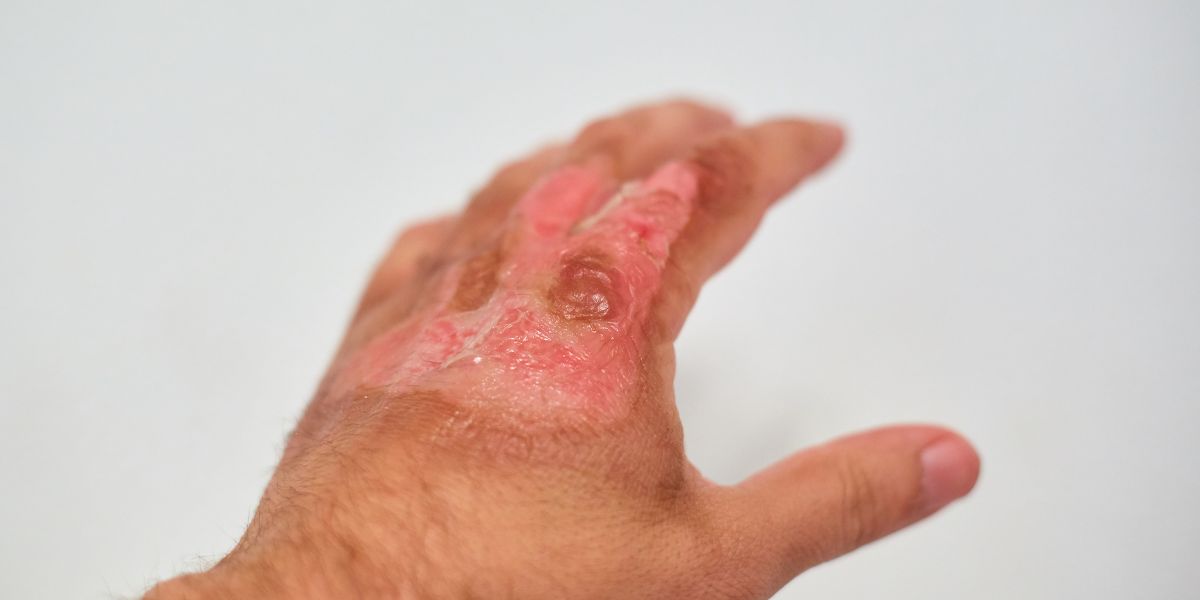THR: What Does It Mean? Check the Rules and How to Calculate It in Indonesia!
Every employee must understand how the provision of THR works as regulated in national labor regulations to ensure their rights are properly fulfilled.

Kapanlagi.com - Burns are one type of injury that we often encounter in everyday life. From minor incidents like being splashed with hot water while cooking to more serious accidents involving fire or chemicals, burns can damage the skin and body tissues with varying degrees of severity.
Understanding the types of burns and how to handle them is crucial to prevent complications and reduce the risk of permanent scarring. Each type of burn has its own characteristics and requires different treatment, depending on the cause and severity.
The skin, as the largest and outermost organ of our body, plays a vital role in protecting the body from bacteria and viruses, as well as maintaining fluid and temperature balance. When a burn occurs with sufficient severity, the skin's ability to perform these vital functions can be compromised.
Therefore, it is important for us to recognize the types of burns so that we can provide appropriate care. Let’s take a look at the complete explanation summarized by Kapanlagi.com from various sources on Thursday (16/1/2025).
Burns, although often considered trivial, have various causes and different levels of severity. Understanding the types of burns is essential for proper treatment and preventing complications.
Types of burns include thermal burns (from heat sources), chemical burns (from hazardous substances), electrical burns (which can damage internal organs without clear signs), radiation burns (from UV rays or medical radiation), and friction burns (from rough surfaces, often accompanied by abrasions).
Each type of burn requires different handling, so it is important to recognize the symptoms and seek medical assistance if necessary.
Understanding burns involves recognizing their causes and severity levels for proper treatment. Burns are divided into three degrees:
1. First Degree: Damages the epidermis, appearing as redness (for example, from sun exposure), requiring care to prevent complications.
2. Second Degree: Reaches the dermis, characterized by blisters and intense pain, requiring medical attention, especially in sensitive areas.
3. Third Degree: Damage extends through all layers of the skin to the underlying tissue, often without pain, requiring emergency treatment.
The extent of the burn area is also important; burns that cover more than 15-20% of the body are at high risk of causing shock and require intensive care. This understanding helps in taking appropriate steps for safety and healing.
Quick and proper handling of burns is essential to accelerate healing and prevent complications. The first step is to stop the burning by removing the victim from the heat source and cleaning the wound with warm water for 15-20 minutes.
Next, evaluate the severity of the burn; if it involves sensitive areas or more than 10% of the body, seek medical help immediately. For minor burns, use alcohol-free antiseptics and special ointments, and keep the wound clean.
After the acute phase, focus on preventing scars with moisturizers and protection from sunlight. Proper treatment and good prevention are crucial for skin health.
(kpl/rao)
Cobain For You Page (FYP) Yang kamu suka ada di sini,
lihat isinya
Every employee must understand how the provision of THR works as regulated in national labor regulations to ensure their rights are properly fulfilled.
Discover everything you need to know about zakat! From who needs to pay zakat, known as muzakki, to the conditions and categories of those entitled to receive it.
Gus Baha reveals that his greatest obsession while studying is to create happiness for Muslims, so they do not fall into sin in their pursuit of happiness.
Diabetes at a young age is increasingly widespread due to unhealthy modern lifestyles.
Discover everything about zakat in this comprehensive guide, from its definition and the laws governing it, to the various types of zakat, mandatory conditions, and the pillars that must be fulfilled.
Preventing corns is much easier and more practical than having to treat them later.
Discover easy and effective ways to remove ads on your Android phone!
Discover the secrets to naturally and effectively remove dark spots on cheeks!
Find practical ways to renew your passport online with a complete guide that covers all requirements, steps, and useful tips to make the process quick and easy.
Overcome nasal congestion easily and effectively! Discover the causes and symptoms, and explore various treatment methods that will help you breathe more freely and comfortably.
Explore the crucial role of the eye lens in the human visual system and discover how this lens works to provide visual clarity.
Discover how to recognize the symptoms of rabies in animals as well as effective prevention and management steps.